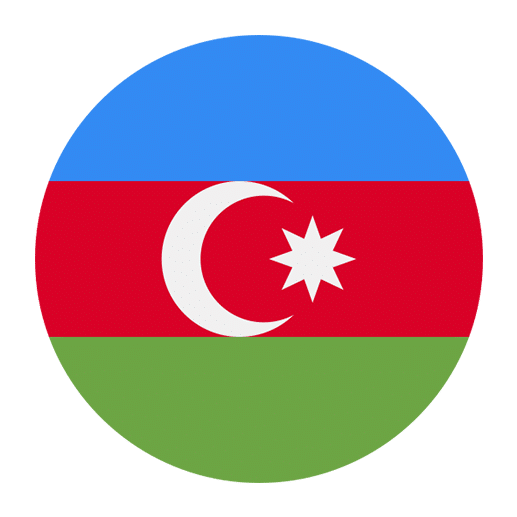Learning a new language can be an exciting journey, and understanding the nuances of frequency adverbs can significantly enhance your fluency and comprehension. In this article, we will explore the world of frequency adverbs in Azerbaijani, providing you with a clear understanding of how to express how often actions occur. Whether you’re a beginner or looking to refine your skills, this guide will help you navigate the intricacies of Azerbaijani frequency adverbs with ease.
Understanding Frequency Adverbs
Frequency adverbs are words that describe how often an action happens. In English, we use words like “always,” “often,” “sometimes,” and “never” to convey this information. Azerbaijani, like many other languages, has its own set of adverbs to express frequency. By mastering these adverbs, you can enhance your conversational skills and make your speech more precise and natural.
Common Frequency Adverbs in Azerbaijani
Here are some of the most commonly used frequency adverbs in Azerbaijani:
1. Həmişə (Always)
“Həmişə” is used to express that something happens all the time or without exception.
Example: Mən həmişə səhər yeməyi yeyirəm.
Translation: I always eat breakfast.
2. Tez-tez (Often)
“Tez-tez” indicates that an action happens frequently, though not necessarily every time.
Example: O, tez-tez kitabxanaya gedir.
Translation: He/She often goes to the library.
3. Bəzən (Sometimes)
“Bəzən” is used to describe actions that occur occasionally or from time to time.
Example: Biz bəzən kinoya gedirik.
Translation: We sometimes go to the cinema.
4. Nadirdir (Rarely)
“Nadirdir” suggests that an action happens infrequently or seldom.
Example: O, nadirdir ki, səhv edir.
Translation: He/She rarely makes a mistake.
5. Heç vaxt (Never)
“Heç vaxt” is used to express that something does not happen at any time.
Example: Mən heç vaxt siqaret çəkmirəm.
Translation: I never smoke.
Placement of Frequency Adverbs
In Azerbaijani, the placement of frequency adverbs is generally flexible, but there are some common patterns. Typically, frequency adverbs are placed before the main verb in a sentence. However, they can also be placed at the beginning or end of a sentence for emphasis.
Before the Verb:
Example: O, tez-tez idman edir.
Translation: He/She often exercises.
At the Beginning of the Sentence:
Example: Tez-tez o, idman edir.
Translation: Often, he/she exercises.
At the End of the Sentence:
Example: O, idman edir tez-tez.
Translation: He/She exercises often.
While the placement can vary, it is important to ensure that the adverb is clearly associated with the verb it is modifying to avoid confusion.
Combining Frequency Adverbs with Other Adverbs
In Azerbaijani, it is possible to combine frequency adverbs with other types of adverbs to provide more detailed information about an action. For example, you can combine a frequency adverb with an adverb of manner to describe how and how often an action occurs.
Example: O, həmişə diqqətlə işləyir.
Translation: He/She always works carefully.
In this sentence, “həmişə” (always) is the frequency adverb, and “diqqətlə” (carefully) is the adverb of manner. Together, they provide a more comprehensive description of the action.
Using Frequency Adverbs in Questions
When asking questions about how often something happens, frequency adverbs are essential. In Azerbaijani, you can use frequency adverbs in questions to inquire about the frequency of actions.
Example: Sən nə vaxtsa kinoya gedirsən?
Translation: Do you ever go to the cinema?
In this question, “nə vaxtsa” (ever) is used to ask about the frequency of going to the cinema.
Expressing Different Degrees of Frequency
In addition to the basic frequency adverbs, Azerbaijani also allows for the expression of different degrees of frequency by combining adverbs or using specific phrases.
Very Often:
Example: O, çox tez-tez kitabxanaya gedir.
Translation: He/She goes to the library very often.
Almost Always:
Example: Mən demək olar ki, həmişə səhər yeməyi yeyirəm.
Translation: I almost always eat breakfast.
Almost Never:
Example: O, demək olar ki, heç vaxt siqaret çəkmir.
Translation: He/She almost never smokes.
By using these combinations, you can convey a more precise sense of how frequently actions occur.
Practice Makes Perfect
To truly master the use of frequency adverbs in Azerbaijani, practice is essential. Here are some exercises to help you practice:
Exercise 1: Translation Practice
Translate the following sentences into Azerbaijani, paying attention to the placement of frequency adverbs:
1. I always wake up early.
2. She rarely eats fast food.
3. They sometimes visit their grandparents.
4. Do you often go for a walk?
5. He never forgets his keys.
Exercise 2: Sentence Construction
Create sentences in Azerbaijani using the following frequency adverbs:
1. Həmişə
2. Tez-tez
3. Bəzən
4. Nadirdir
5. Heç vaxt
Exercise 3: Combining Adverbs
Combine frequency adverbs with adverbs of manner to describe actions more precisely:
1. Always carefully
2. Often quickly
3. Sometimes quietly
4. Rarely loudly
5. Never slowly
Common Mistakes to Avoid
When learning to use frequency adverbs in Azerbaijani, there are some common mistakes that learners should be aware of:
1. Incorrect Placement:
Placing the adverb in an awkward position can lead to confusion. Ensure that the adverb is clearly associated with the verb it modifies.
Incorrect: O, idman edir həmişə.
Correct: O, həmişə idman edir.
2. Overusing Adverbs:
Using too many adverbs in a sentence can make it cumbersome and difficult to understand. Use adverbs judiciously to maintain clarity.
Incorrect: Mən həmişə hər gün tez-tez idman edirəm.
Correct: Mən həmişə idman edirəm.
3. Neglecting Context:
The frequency of an action can depend on the context. Be mindful of the context in which you are using frequency adverbs to ensure accuracy.
Incorrect: O, həmişə gecikir.
(If the context does not support “always,” it could be misleading.)
Correct: O, tez-tez gecikir.
(If he/she is often late but not always.)
Conclusion
Mastering frequency adverbs in Azerbaijani is a crucial step toward achieving fluency in the language. By understanding how to use these adverbs correctly and practicing their application in different contexts, you can enhance your ability to communicate effectively and naturally. Remember to pay attention to placement, context, and the nuances of combining adverbs to convey precise meanings.
Language learning is a journey, and each step you take brings you closer to your goal. Embrace the process, practice regularly, and soon you’ll find yourself confidently using frequency adverbs in Azerbaijani conversations. Happy learning!

